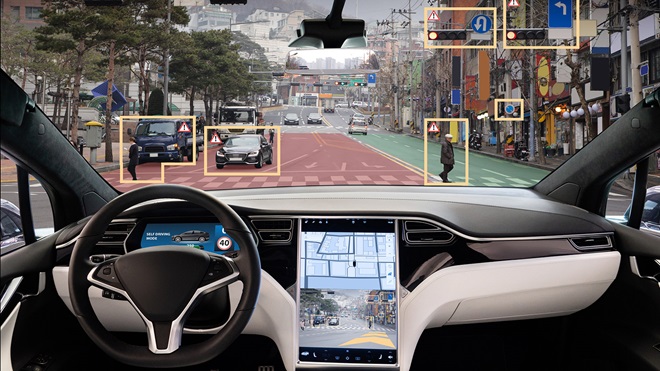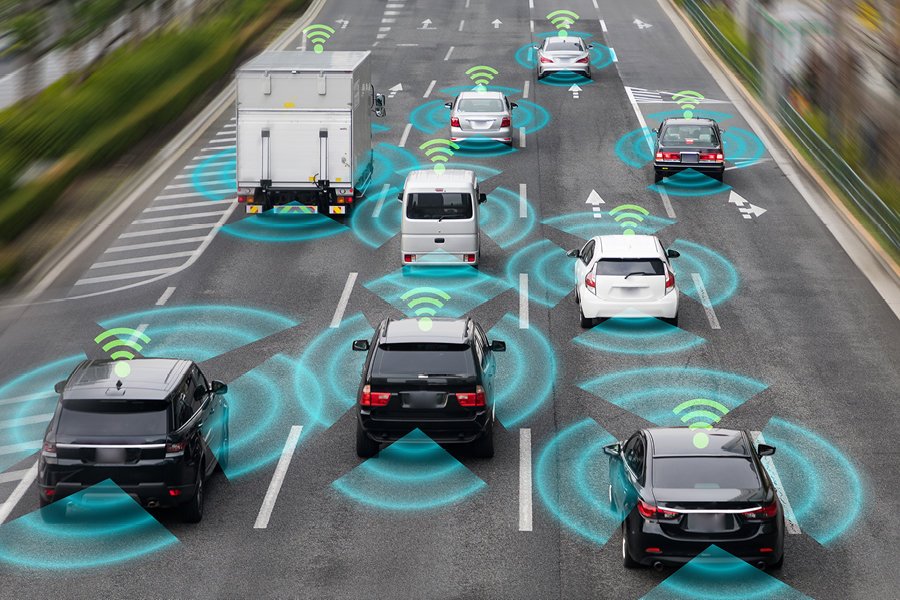
The Impact of the Connected Autonomous Vehicle in the roadway of the future: Challenges & Opportunities
08 of September of 2022
The strong development of the Connected Autonomous Vehicle (CAV) during the last years is changing and will even change more in the next decades the way the future new roadways are designed and built and how the existing ones are operated and maintained. From being a monolithic asset almost absolutely independent from its main user, the car, the revolution of the CAVs will for sure revolutionize the concept of a modern roadway.
Challenges of CAVs
The challenges that the CAVs deployment in the roadway networks present are diverse and transversal (from the pure technical or economic to the legal ones), varying from the new to the existing roadways. Most of them are already been trying to be addressed in the industry, while there are others that we still do not even envision.
If we focus on the future new roadways, it is clear that the parameters and principles that have been shaping them for decades will definitively have to be, if not changed, at least rethought. Does it make sense to continue considering the same perception and reaction times (two key values when determining the sight distances in a roadway and hence the road geometry), when the being that now perceives and reacts is no longer a human, but a machine. Are the current safety devices such as the barriers still useful for the CAVs? Are the vertical signs showing directions still needed when all the AVs will be GPS guided? How do we ensure that the horizontal markings are well maintained, a key safety matter for CAVs?

As for the existing roadways, the situation is even more pressing. While it is true that it will still take some years for the implementation of the CAVs in its higher autonomy level (“Level 5 – Full Automation” according to the Society of Automotive Engineers SAE classification), it is undeniable that for reaching that standard, and even preceding levels, a transformation, or rather an adaptation of the existing roadways to the new mobility paradigm will be needed.
In that sense, different initiatives are currently underway by different administrations, being the new Framework for Automated Driving System Safety leaded by the National Highway Traffic Safety Administration (NHTSA) or the announcement made by the Spanish DGT (Dirección General de Tráfico) that within 18 months there will be a new regulation allowing the Level 4 (and probably 5), well examples of them.
Opportunities
While the main challenges are in general well identified and already under analysis by the key players in the field, trying to provide effective solutions to them, it is worth it to highlight the major opportunities that are arising and will arise in the future from the transformation of the roadway concept.
There is a general agreement that the implementation of the CAVs will definitively imply an appreciable improvement on a set of different aspects. As the American Association of State Highway and Transportation Officials (AASHTO) noted in its letter to the NHTSA outlining recommendations for the abovementioned Framework for Automated Driving System Safety, “there is great potential that CAVs will improve safety, enhancing mobility and reducing the environmental impact on surface transportation system”. But what about those opportunities that are not so obvious?

Just to set an example, let’s think on the possible reduction of the lanes width in major highways or even in the cities. Currently, the lanes width, mainly in highways, are determined assuming the “imperfect” nature of the human driving, providing an extra width over the strictly necessary one in order to absorb possible deviations from the theoretical path. Given that CAVs are always guided through the same, exact path, would that assumption still be necessary in existing and future highways? Probably not, and that will allow to gain several extra meters in the existing highways. How to use that extra room is open to discussion, but the options may go from restoration into extra green areas, paths for new means of transport compatible with the highway, solar panels to provide extra energy, etc. If we focus on urban areas, the opportunity of recovering thousands of square meters to the cities for uses other than asphalt pavement is simply overwhelming.
Almost everything still to be done
The previous was just an example, but the possibilities are limitless. What it seems to be clear is that a more complex roadway scenario will require innovative solutions. For that, cars manufacturers and roadways constructors will no longer be able to work alone but, on the contrary, they will have to work in close collaboration with other key players that they never thought they would have to work with to provide safer, environmentally friendly and mobility enhancer infrastructures while improving the people’s quality of life which, we must not forget, is the final goal we should always look for.





1 comment
Gary Geiersbach
16 of September of 2023
I like the way the cab drivers in NYC take care of the rubberneckers and accordion effect. If traffic don't go, they honk, then if it still doesn't go, they push it out of the way. The needs of the many outweigh the wants of the few. If you're sight-seeing you need to be doing it from the sidewalk and not from behind the steering wheel.